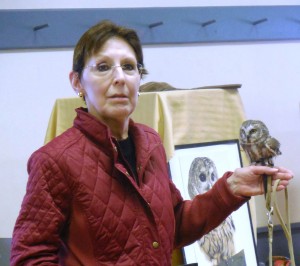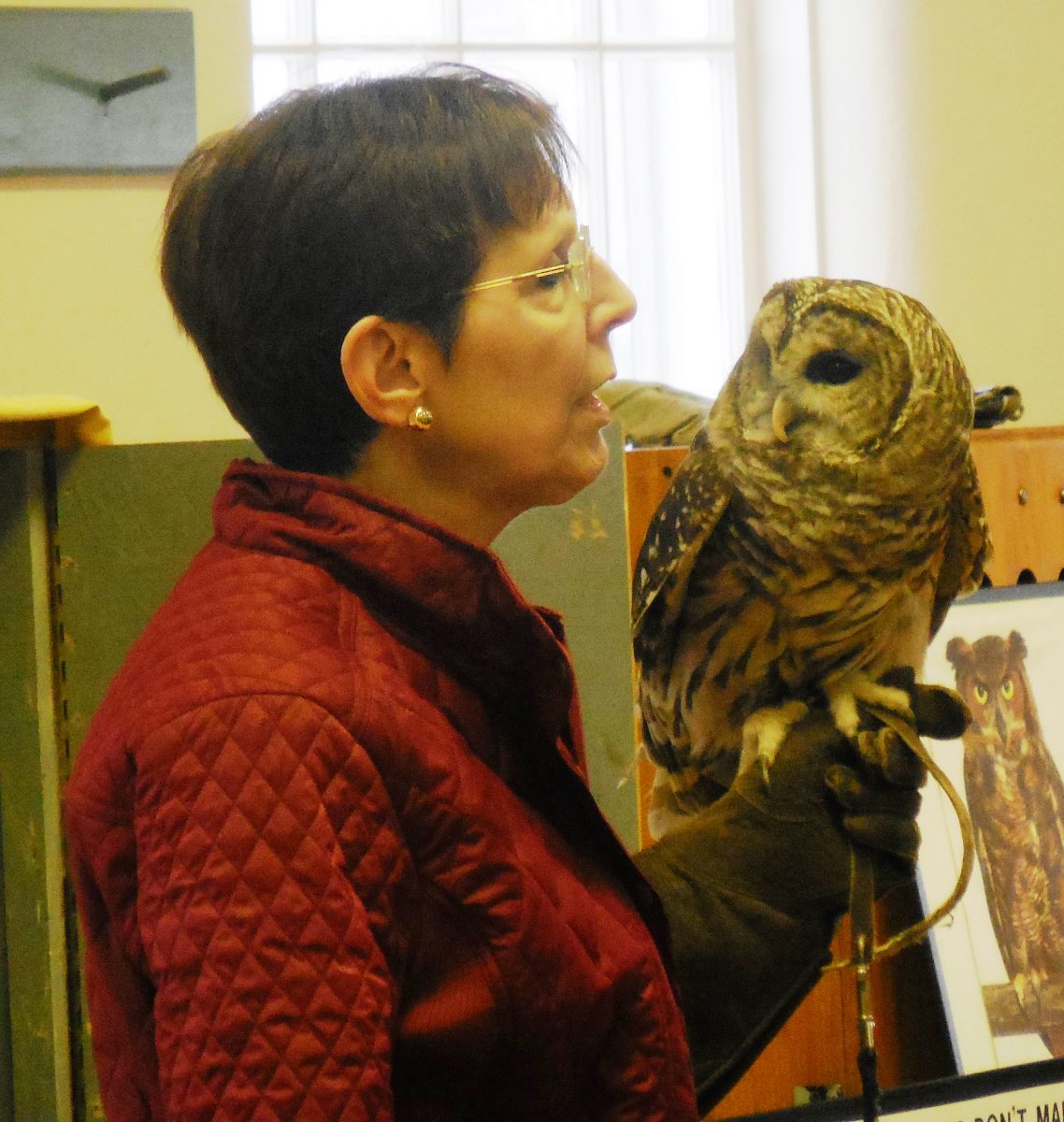
Licensed raptor rehabilitator Julie Collier brought live owls to the Montgomery Town Library for a program on Monday. Shown is the saw-whet oil, “the world’s cutest owl,” Collier said. (Photo by Amy Porter)
MONTGOMERY – Wingmaster Julie Cowell brought five live owls to the Montgomery Town Library to present “The World of Owls” to a packed audience of schoolchildren on vacation, their parents and other interested adults on Monday afternoon.
Cowell, who is part Creek and Chickasaw, is a licensed raptor rehabilitator and falconer, who along with her Wingmasters partner Jim Parks has given over 5000 presentations in schools, libraries and museums around New England.
With her on Monday were a screech owl, saw-whet owl, barred owl, great horned owl and barn owl. Cowell said that none of the owls she brought to the program will live in the wild again, due to injuries. She said that most owls that come to her for rehabilitation have collided with cars, or were found as babies.
Baby owls that are found on the ground if left alone and protected from pets may climb back to their nests. Cowell said that currently she is caring for a baby owl that has to be fed every two hours overnight with minced microwaved mice.
Cowell said that she does not want an owl as a baby imprinting on her as Mom, so she wears an owl mask.
”If things go right, by the end of the summer, they’re released,” she said. She has released hundreds of birds after rehabilitation, and “never been thanked,” she said.
Cowell said that owls, despite their intelligent faces, have very small brains.
“They look smart, because their eyes are in front like yours and mine,” Cowell said. On the intelligence scale, she rates them as a one, compared to a red-tailed hawk at a ten, and a raven, one of which she is currently caring for, at a 13.
Owls are also good ventriloquists, Cowell said. Before she brought out each owl, she imitated its call. If you hear the call, the owl is almost never in the direction it’s coming from. She also said that people will rarely see a screech or saw-whet owl, the smallest birds that she brought, because of their ability to camouflage in trees.
Most of the people in the audience, when asked, had seen a barred owl. Cowell said barred owls are doing very well in the region, expanding their population among people, because where people live there is garbage which attracts rodents, their main source of food. Barred owls are known for their calls, sometimes described as “Who cooks for you. Who cooks for you all?” She said if you want to see an owl, go out at 8 p.m. and play the owl call, and the owl will come to investigate.
Great horned owls are the only ones in Massachusetts with a deep hoot, the typical owl sound. Cowell said great horned owls rule the skies at night, hunting animals as large as fishers and cats, as well as rodents and other birds. She said they are attracted to a patch of white on animals, and not to let pets out at night.
Owls never feed during the day, Cowell said, because they are hiding from other birds. Song birds will make a recognizable chirp to call other song birds to “mob” the owl. If the owl is cornered during the day, the song birds will peck the owl to death.
Barn owls, the last owl that Cowell showed, disappeared from western Mass. 15 years ago, due to loss of barns and fields, and also pesticides that show up in mice. The only remaining population is in Martha’s Vineyard, and is at risk from great horned owls.
Cowell also displayed her drawings, and her partner Jim Parks’ photographs of owls for sale.
The audience of children and adults were quiet throughout the program, in awe of the rarely seen birds.


